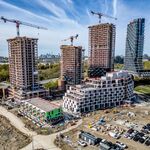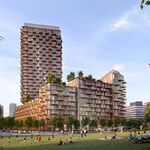What I really like about the plan:
1. Downtown subway line.
2. Improved GO service including all-day to more lines, 15 minute headways on some routes, and express services.
3. LRT used on many routes.
4. Having new routes meet at shared hubs to reduce transfers (i.e.Finch West and Sheppard. Jane LRT and Eglinton West GO / Eglinton LRT/subway )
What I am OK with:
5. Converting Sheppard to LRT in the short term. This costs very little to do as it only involves changing the profile of the platform and doesn't change the support structures at all. A single route without transfers from the airport, past Humber college, through Downsview and North York to SCC makes more sense than a Finch LRT from Humber college to Finch station, transfering to Yonge line, transferring to Sheppard line, transferring to Sheppard LRT, and getting near the SCC but having no obvious way of getting there.
6. Considering putting LRT on Eglinton in the underground portion under the condition that the underground portion is tunnelled and planned to allow subway use in the future... this means space for turnstiles and a booth when POP is replaced and tunnels large enough and with track laid to handle subway loading. If a tunnel is built for LRT only it would be an impediment to building subway when needed because the whole route would need to be shut down after building up ridership.
7. The numerous east-west routes north of Finch if what is there is a Steeles LRT, a GO busway, and Highway 7 LRT/BRT. This plan seems more organized in this repect because some proposals had something on Finch, in the hydro corridor, on Steeles, in the CN north rail corridor, a 407 busway, and a Highway 7 LRT which I think would have made the area the most overserved. The Metrolinx plan strikes a better balance in that the Steeles LRT doesn't start until Finch swings down to Sheppard, and there isn't both a 407 Busway and a Hydro Corridor Busway (redundant).
What I completely dislike:
8. That the SRT still exists. We just don't need this extra mode of transit in between LRT and subway nor do we need the extra transfer between Scarborough and Downtown. Make it subway to Scarborough Town Centre and LRT to Malvern as a continuation of the Sheppard Finch LRT.
9. The airport access is a spur line rather than a corridor diversion or loop which serverely limits the potential of the connection.




